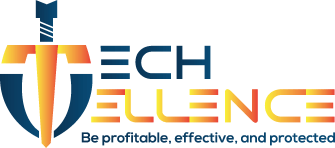 How the Techellence CIO manages change by tackling the highest priority issues increasing customer (corporate employees and leaders) satisfaction and trust by 30%+.
How the Techellence CIO manages change by tackling the highest priority issues increasing customer (corporate employees and leaders) satisfaction and trust by 30%+.
Dr. Sang Sur directed and managed "change" since his time in the military. His role as the United States Air Force Officer was to research, train, and equip the US Special Forces with Unmanned Aerial Vehicles (UAVs) to accomplish their unique missions. Afterward, he directed process improvements that reduced thirty (30) days of work, allowing completion of the same manufacturing work in three (3) days (he is certified as a six-sigma black belt). At another company, he handled acquisitions where each was a significant change for incoming and existing employees. His role was to minimize the conflicts and help the members excel in their roles despite the many changes. His failure to manage change would mean reduced revenue or a failed acquisition.
As the M&A lead representing global Information Technology, Dr. Sur provided advisory and consulting services directly to the various chief business operators. He presented the to-be-acquired companies' technical stack and recommendations on transitioning their systems over. His ability to explain business and technical needs in less technical language helped the operational executives identify where to cut human resources and systems and plan their future operations. With these decisions, Dr. Sur developed plans for the IT transition work, including onboarding and enabling employees from acquired companies to ease into the new culture and environment. His acquisition depended on retaining key employees to keep the business value successful as the new business became "business as usual." He successfully managed change by exceeding projected profit targets for multiple acquisitions.
In his later role, Dr. Sur managed a significant "change" in reorganizing a failing IT team to be aligned with business needs. One of the fundamental changes was reconstructing how IT received help requests and resolved the problem of their customers.
Before Dr. Sur's involvement, all IT members were considered "helpdesk," and IT functions operated ad hoc. IT support was given to the few who had direct (personal) phone numbers of some IT members, while those with actual critical business-impacting needs could not get immediate help. Those with hierarchical titles used their ranks to demand their work get done. The IT department did not have a division of specific functions, and all IT members were alerted and mobilized unnecessarily. The IT team did not function well, and morale was low. With IT security issues rising, the company's president brought Dr. Sur on board to remedy this loss situation.
The issues with the current setup were many. To name a few:
- Not all issues were resolved. Many employees considered IT incompetent and unhelpful because many of their requests were lost. The employees felt they needed to "shout louder" and get higher hierarchical ranked personnel to raise the issue to the ears of the president of the company to get their requests resolved.
- Issues were not resolved to customer satisfaction. Sometimes, the wrong issue was fixed, or the fix led to more problems. The person who requested help did not have a point person to contact for the issue to follow up, express concerns, or ask questions. Customer satisfaction also plummeted because the team would flock to the new problem when another issue arose, leaving the current work half-done.
- The highest priority requestors were often neglected. It was paramount to ensure that store operations work without issues during the operating hours in the retail store business. Proper store operations include cash registers and stock-maintaining tools such as item scanners and stock-maintenance systems. The failure to sustain store operations would lead to a loss in profits and customer trust. With stores having less-tech-savvy personnel and relationships with IT team members, they often had no way to request immediate IT help. As a result, lower priority work was taken care of, while more critical issues impacting sales were often left behind.
The first order of action was to identify a platform to funnel "all" help requests. Once that was ready, Dr. Sur communicated that a change in how IT will receive IT requests was coming to all company employees. In line with the enterprise notification, Dr. Sur eliminated or identified messaging for all random communication channels where people requested help, such as Kakaotalk, Slack, and direct text messages to IT staff. Instead, they were given three official ways to request IT help: an IT request website accessible by mobile phones, email, or a phone call to a central IT number. A call center was initiated to enable store managers to call in their problems so that the IT team may handle their requests as a higher priority.
As people reverted to their old ways, Dr. Sur set up "automated" messages to gently remind them to use the three methods. An easy-to-access website has been developed so that users do not have to remember the long URL names. Additionally, business cards have been ordered in bulk so that the IT Field Services can drop off these cards whenever they visit customers to provide service. In this business card are the three ways they can request IT help and a link to where they can leave feedback on their IT support experience. Users also get an automated link to enter their customer experience when a support ticket is closed.
The key benefit of this funnel is that every requested help is tracked and made visible. As a result of the data collection, Dr. Sur enabled the IT team and their customers to see priorities. Additionally, each help requestor could track their issues until closure, see the status of the pending work, and have a specific person assigned to their request to reach out to them and provide feedback on their satisfied results.
As a result of managing "change," Customer satisfaction and trust in the IT department have continued to rise with a measurable increase of at least 30% based on surveys.

 How the Techellence CIO enabled the highest revenue in the company’s history of $1.5B amid uncertain times while supporting a massive, nationwide retail organization of 70+ stores and 10+ warehouses with a small IT workforce.
How the Techellence CIO enabled the highest revenue in the company’s history of $1.5B amid uncertain times while supporting a massive, nationwide retail organization of 70+ stores and 10+ warehouses with a small IT workforce.  How the Techellence CIO generated profits handling acquired companies for a global Fortune 500 software company leading to a successful exit of $18.9B.
How the Techellence CIO generated profits handling acquired companies for a global Fortune 500 software company leading to a successful exit of $18.9B.  What is the role of an IT organization? A response from the Techellence CIO, who established a flourishing IT organization that other departments aspire to join.
What is the role of an IT organization? A response from the Techellence CIO, who established a flourishing IT organization that other departments aspire to join.  How the Techellence CIO enabled $53M revenue, exceeding aggressive projections by more than 35%, by successfully handling an acquisition transition of a $550M investment.
How the Techellence CIO enabled $53M revenue, exceeding aggressive projections by more than 35%, by successfully handling an acquisition transition of a $550M investment.  How the Techellence CIO directed IT governance, transforming CMMI level 1 organization to that of level 4.
How the Techellence CIO directed IT governance, transforming CMMI level 1 organization to that of level 4.  How the Techellence CIO rehabilitated the software development team to focus more on the customers, directly impacting the company’s profitability and reducing financial losses.
How the Techellence CIO rehabilitated the software development team to focus more on the customers, directly impacting the company’s profitability and reducing financial losses.  How the Techellence CIO further reduced attrition and morale loss of people whose companies were being acquired, facilitating acquisition integration success.
How the Techellence CIO further reduced attrition and morale loss of people whose companies were being acquired, facilitating acquisition integration success.  How the Techellence CIO enabled a $2M startup to build a globally scalable efficient system.
How the Techellence CIO enabled a $2M startup to build a globally scalable efficient system.